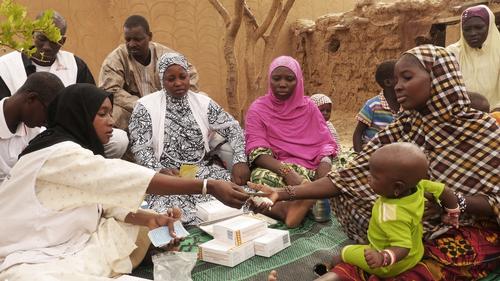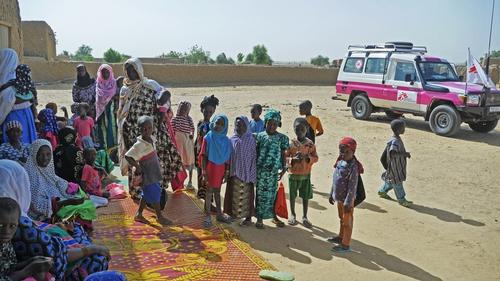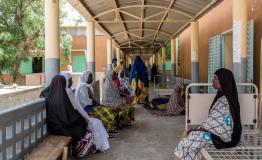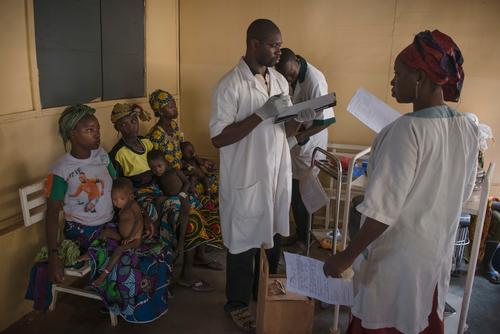Côme Niyomgabo has just returned from Mali, where for more than two years he has been coordinating MSF’s work in the regions of Gao and Kidal, in the north of the country.
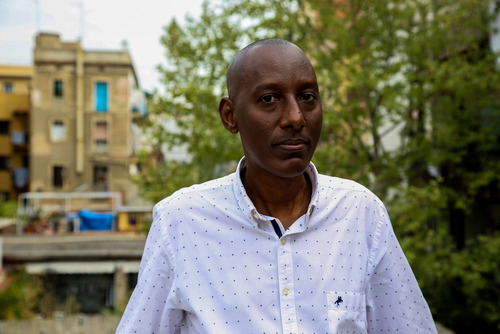
How has Mali changed in these two years?
The evolution of the conflict has not been positive. I arrived in Mali in February 2015, a few days before the Algerian accords between the government of Bamako and several pro-independence and pro-government groups in the north were made public; they were finally signed on 20 June the same year. Despite signing the agreement, its implementation was fraught from the beginning and hostilities between the armed groups in the north did not stop. Some months later, a pact was agreed at community level among Tuareg groups in the town of Anefis, but this has not led to increased peace and stability. Since then, the presence and attacks of jihadist groups has increased considerably, there has been an outburst of conflicts between communities spearheaded by armed groups, and crime has also increased. In this context, the humanitarian space has been further reduced in the affected regions.
What is the humanitarian situation in the north of the country?
In Mali, there is not a single crisis; there is an overlap of crises that adds up to a chronic crisis. If we do not say that there is an acute humanitarian crisis in northern Mali today, it is only because of the low population density in the area. The northern regions of Mali account for two-thirds of the country’s territory, but have a population of less than two million people. The majority of the people are nomadic, so it is easy for their situation to go unnoticed, even if it is critical.
There is now the risk of an acute crisis in the centre of the country. Radical groups have moved in, taking advantage of the population’s sense of neglect and injustice from the government, while the historical conflicts between the Bambaras (traditionally grain farmers) and Peuls (traditionally livestock farmers) groups continue.
Meanwhile, it seems that international actors are starting to show signs of fatigue of the crisis, with the Humanitarian Plan barely reaching 37% of its funding goal last year.
Has the population situation in northern Mali improved in these two years?
It depends on the area. In Gao, for example, the government (which was completely absent after the Tuareg rebellion in May 2014) slowly started to return to the region at the beginning of 2015. However, its presence is limited to towns and is almost symbolic in terms of providing social services for the population. On the other hand, in 2015 there were many more humanitarian actors and funding. Now, humanitarian assistance has declined sharply and the government has not yet been able to cover the needs, mainly in peripheral areas that are often under the control of armed groups. So, the population is in a more marginal situation.
In Kidal, the government is still completely absent, and after more than five years of armed conflict, the people have no further resources to deal with the crisis. However, the humanitarian organisations that left the region mainly due to insecurity reasons have begun to return, including MSF, and more actors are now arriving. Overall there are now more services than in 2015 but they are still insufficient.
MSF has just published a report on the appropriation of humanitarian aid by armed actors. How is this happening on the ground?
The two main military operations in Mali – the UN mission (MINUSMA) and the French military operation Barkhane – use humanitarian aid for their military and political objectives. Today, there are examples of soldiers distributing medicines in a health centre, but not in response to needs, rather to improve their acceptance for the benefit of their own interests.
The risk of this policy is enormous for us as we depend on the acceptance of the population and all armed groups to do our work. If we are seen as collaborators to one of the parties in conflict, this acceptance can be broken and we can become targets of attacks by other groups, preventing us from doing our work and assisting the population. That is why we have published this report to ask all actors to establish a clear separation between humanitarian assistance and military operations and objectives.
Can you give us an example of how this appropriation of aid is harmful to humanitarian aid?
In January 2017, we went to Douentza, in the centre of Mali, to assess the humanitarian situation and see if an intervention was necessary. A few weeks earlier, local elections had been held. The military were afraid of being attacked by the armed groups present in the region, so they decided to hold the elections at the health centre, which was then attacked by the armed groups to demonstrate their lack of support for the elections. The health staff left the area and the health centre was closed, depriving people of access to health care.
Another example of the potential risk to humanitarian activities is the foreign military’s use of unidentified vehicles to avoid being easily identified and directly targeted by armed actors. Since these non-identified vehicles can be confused for humanitarian vehicles, there is a real risk that armed actors will begin to target all non-identified vehicles with the assumption they are carrying military personnel.
What projects does MSF currently have in the north of the country?
We are working in Ansongo district, in the Gao region, supporting a referral hospital and a health centre. In addition, we have identified key people within the nomadic community and trained them to be able to diagnose and treat the most common diseases during the six months of the year in which these people migrate with their livestock far from the health centres. In 2016, we also provided preventive antimalarial treatment to more than 57,000 children during the peak malaria season, while we implemented a massive vaccination campaign.
In Kidal, we are supporting two health centres in the town and four more on the outskirts. Last year, in collaboration with local authorities, we were able to implement a malaria prevention campaign in the area for the first time, which reached more than 16,000 children.
Finally, we will soon start a project in the area of Douentza, in Mopti, supporting the reference hospital.
MSF first worked in Mali in 1992. Currently, MSF’s teams are working in the regions of Kidal, Gao, Sikasso and Mopti.



